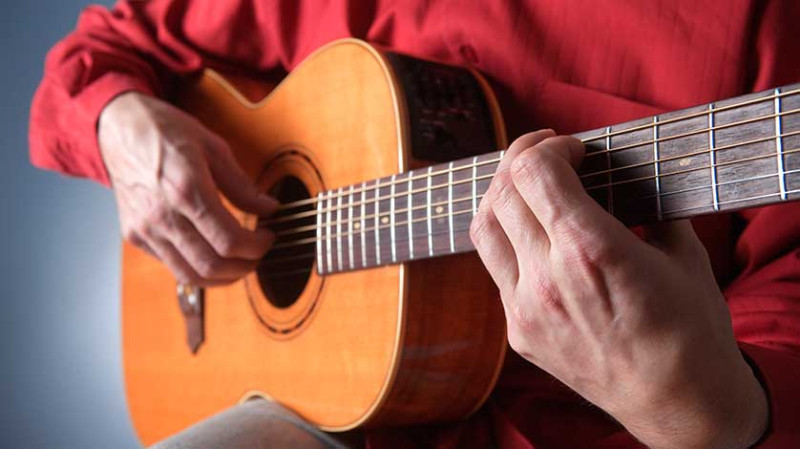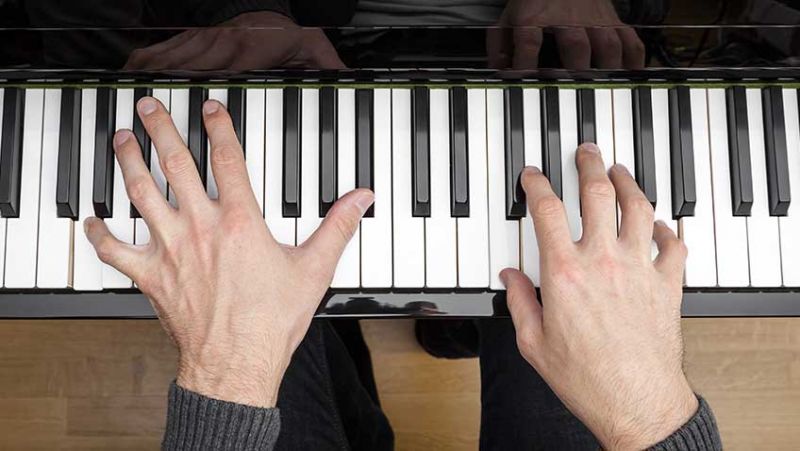
Whether you're a beginner guitarist or a seasoned musician seeking new ways to enrich your sound, learning to strum without a pick can unlock a warmer, more expressive tone on your acoustic guitar. This technique—also known as fingerstyle strumming or bare-handed strumming—gives you a unique touch, allowing for greater dynamic control, versatility, and musical personality. In this guide, we’ll help you master the art of strumming without a pick, focusing on technique, control, and sound.
Why Ditch the Pick?
Guitar picks offer precision and brightness, but strumming with your fingers opens up a whole new tonal palette. Without a pick, your hand's connection to the strings adds warmth, depth, and subtlety. For genres like folk, blues, flamenco, or singer-songwriter acoustics, finger strumming feels more organic—and in many cases, it suits the aesthetic and play style better.
Many UK-based acoustic artists and songwriters rely on bare-hand strumming for more emotionally resonant performances. It allows direct manipulation of tone and rhythm—ideal for those doing home jam sessions, intimate gigs at local venues, or even content creation on platforms like YouTube and Instagram.
Moreover, for DIY musicians and budget-conscious beginners, playing without a pick can eliminate the constant need to purchase replacements. Simply put—your fingers are always with you.
Mastering the Basic Technique
Start by understanding the mechanics of strumming with your fingers. Your right hand (for right-handed players) becomes the pick. The motion typically comes from your wrist and forearm, not your whole arm. Keep your hand relaxed and your wrist fluid. Begin with slow, intuitive movements until it becomes second nature.
When strumming down, brush your index fingernail across the strings. For an upstroke, scoop upward using your thumbnail or side of your thumb. This gives clear articulation without needing the rigidity of a pick. This motion may feel strange at first, but with consistency and patience, it gets smoother and more expressive over time.
It’s also a good idea to practice with a metronome. Start with downstrokes only, then progress to alternating down and up strokes. Once you get comfortable, try mixing rhythm patterns to introduce syncopation, accents, and muting.
Best Finger Positions for Strumming
Your hand should mimic a natural curved shape—as if loosely holding a small ball. This relaxed position allows each finger to be ready for movement. Many players tuck their fingers slightly into a loose fist, using the index finger for downstrokes and thumb for upstrokes.
Another popular technique is the “claw” position, where the index and thumb form an open circle. This setup gives you more control in both strumming and picking individual notes, blending the rhythmic power of strumming with the melodic finesse of fingerpicking.
If you're experimenting with fingerstyle rhythms, consider using multiple fingers to hit different string groups—thumb for bass notes (usually E, A, D), and index to ring fingers for treble strings (G, B, high E).
Tone Control: The Advantage of Your Fingertips
Unlike a stiff plastic pick, your fingernails and skin provide an excellent spectrum of tonal variety. A nail produces a bright, percussive tone, while the pad of your finger delivers a soft, warm feel—perfect for intimate genres like folk ballads or slow acoustic covers.
This control allows you to adjust dynamically in real-time—play gently to create a whispery brush of chords, or dig in with your nails for a snappier, more aggressive tone. Such versatility is ideal for home recordings or live acoustic sets where emotion and feel outweigh volume.
With practice, you’ll learn to blend nail and flesh for hybrid tones, giving each strumming pattern character and nuance. This is especially useful for UK-based singer-songwriters looking to cultivate a unique sound in a competitive music landscape.
Popular Strumming Patterns to Practice Without a Pick
To help you get started, here’s a simple table outlining a few essential strumming patterns ideal for fingerstyle players. Use a metronome to develop rhythm accuracy and gradually build speed while maintaining tone control.
| Pattern Name | Direction | Count (Beats) | Best For |
|---|---|---|---|
| Basic Downstrum | D - D - D - D | 1 2 3 4 | Beginners, slow ballads |
| Down-Up Rhythm | D U D U D U D U | 1 + 2 + 3 + 4 + | Pop, country |
| Syncopated Groove | D - D U - U D U | 1 2 & 3 & 4 & | Folk, acoustic pop |
| Reggae Feel | - U - U - U - U | 1 & 2 & 3 & 4 & | Reggae, chill vibes |
Start slowly and gradually increase tempo as you gain confidence. Don’t rush—clarity of chords and consistency of timing is far more important than speed.
Tips to Avoid Common Mistakes
Many beginners struggle with finger fatigue—especially in the early stages. To avoid this, keep your wrist loose and avoid tensing your arm. Excessive tension can lead to discomfort and even injury during prolonged practice.
Another common issue is uneven strumming—where some strings sound louder than others. This is usually due to hand positioning or unbalanced finger pressure. Use a mirror or record yourself to refine your motion and consistency.
Finally, don’t abandon picks altogether. Both styles have their place. Hybrid players can switch techniques seamlessly based on song demands, gig settings, or tonal preferences. Versatility is your greatest asset as a modern musician.
Perfect Genres for Fingerstyle Strumming
Strumming without a pick suits a wide variety of musical genres. It flourishes in folk, where emotional storytelling and organic tones are key. For blues and soul music, fingerstyle strumming allows more expressive chord work and vibrato depth.
Singer-songwriter acoustics thrive with this approach, as it enriches vocal accompaniment with rhythmic lightness and warmth. Even subtle pop arrangements—heard across British acoustic acts and indie albums—benefit from the softer attack offered by your fingers.
If you're interested in traditional genres like flamenco, bossa nova, or fingerpicked blues, strumming with your fingers integrates naturally into these playing styles through rasgueado techniques or rhythm syncopation.
Creating A Signature Sound
Strumming without a pick can become part of your identity as a guitarist. Your finger length, nail shape, strumming angle, and touch all combine to create a tone unique to you. You’ll never strum two chords the same way, and that’s what gives your playing life.
Professional artists—especially those recording from home studios or performing at open mic nights across the UK—often develop signature strumming patterns that fans instantly recognise. Whether you’re performing live or creating looped guitar tracks, leaving the pick behind allows your music to speak more directly and personally.
Final Thoughts
Mastering how to strum an acoustic guitar without a pick brings artistic freedom and tonal precision. It enhances expressiveness, enables dynamic control, and reflects your personality through your playing. Whether you're redecorating your musical room with mellow chord vibrations or showcasing your skills during a set at your local pub, this technique adds an authentic voice to your sound arsenal.
So set down your pick, roll up your sleeves, and let your fingers do the talking. With practice, patience, and some rhythm in your soul, you’ll unlock a deeper connection between you and your instrument.
Ready to enhance your acoustic game? Bookmark this post and follow our upcoming #guitarlessons and #guitartutorial content—you won’t want to miss the tips and tricks we’ve lined up just for UK-based guitar lovers like you.





